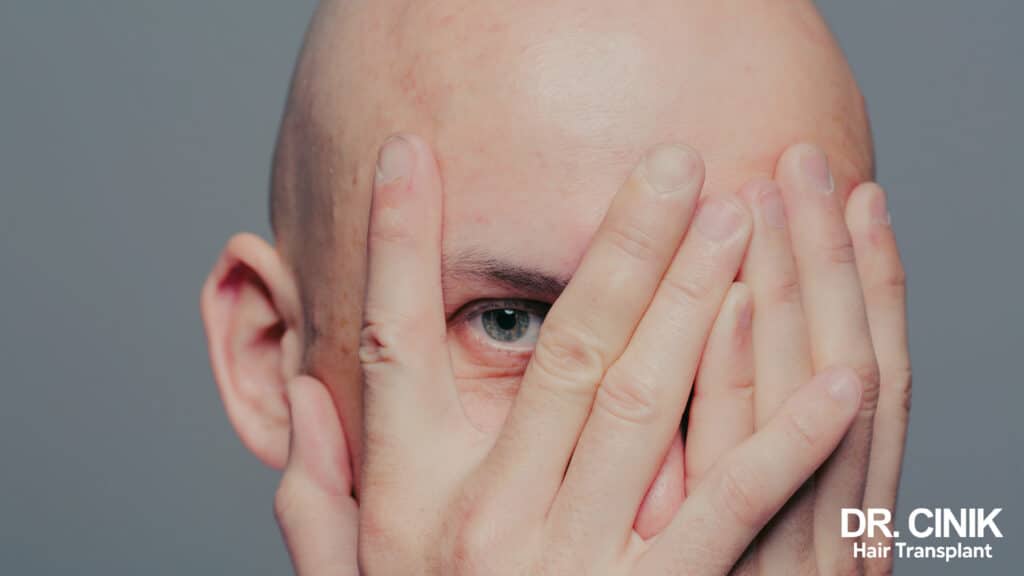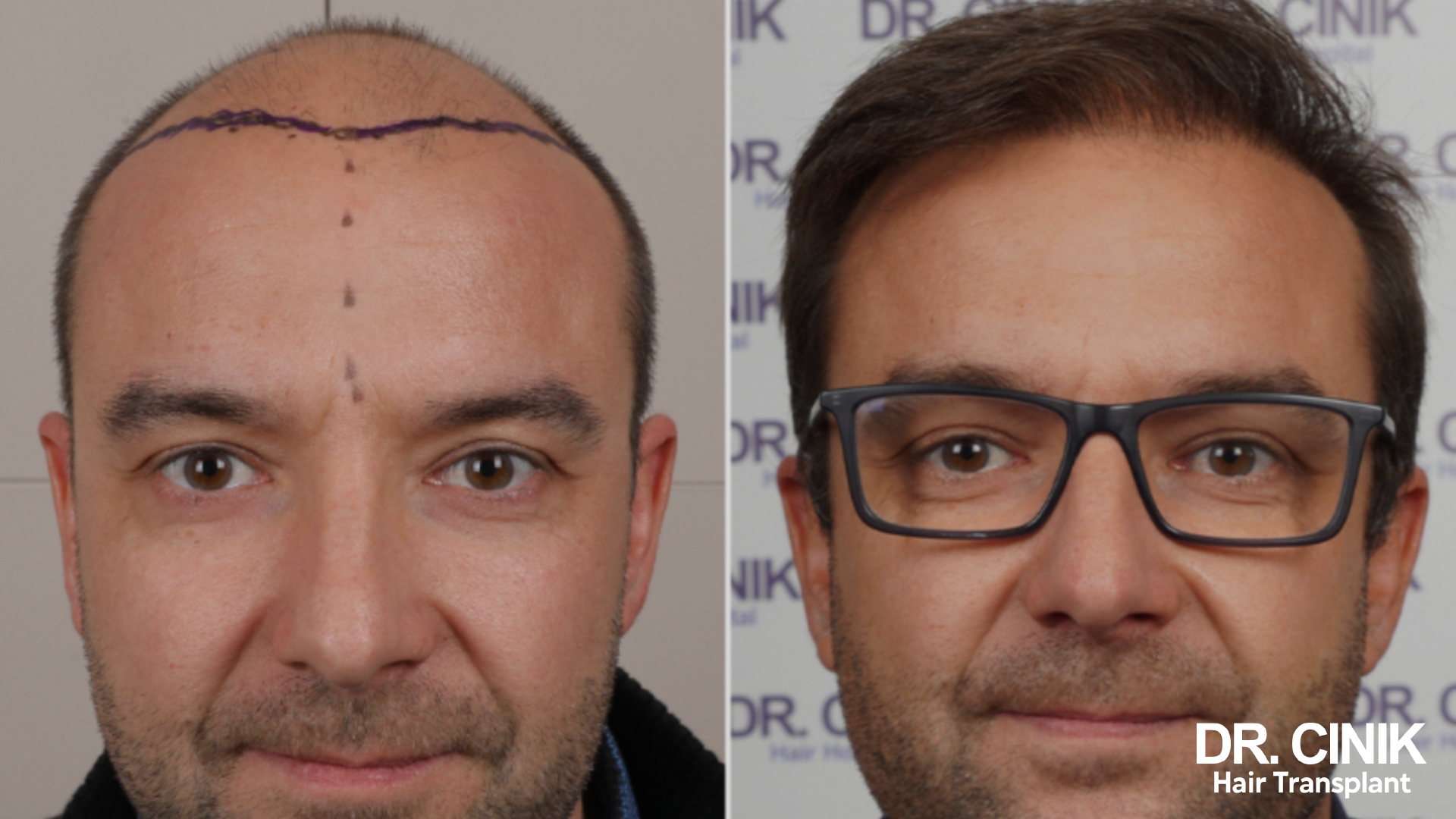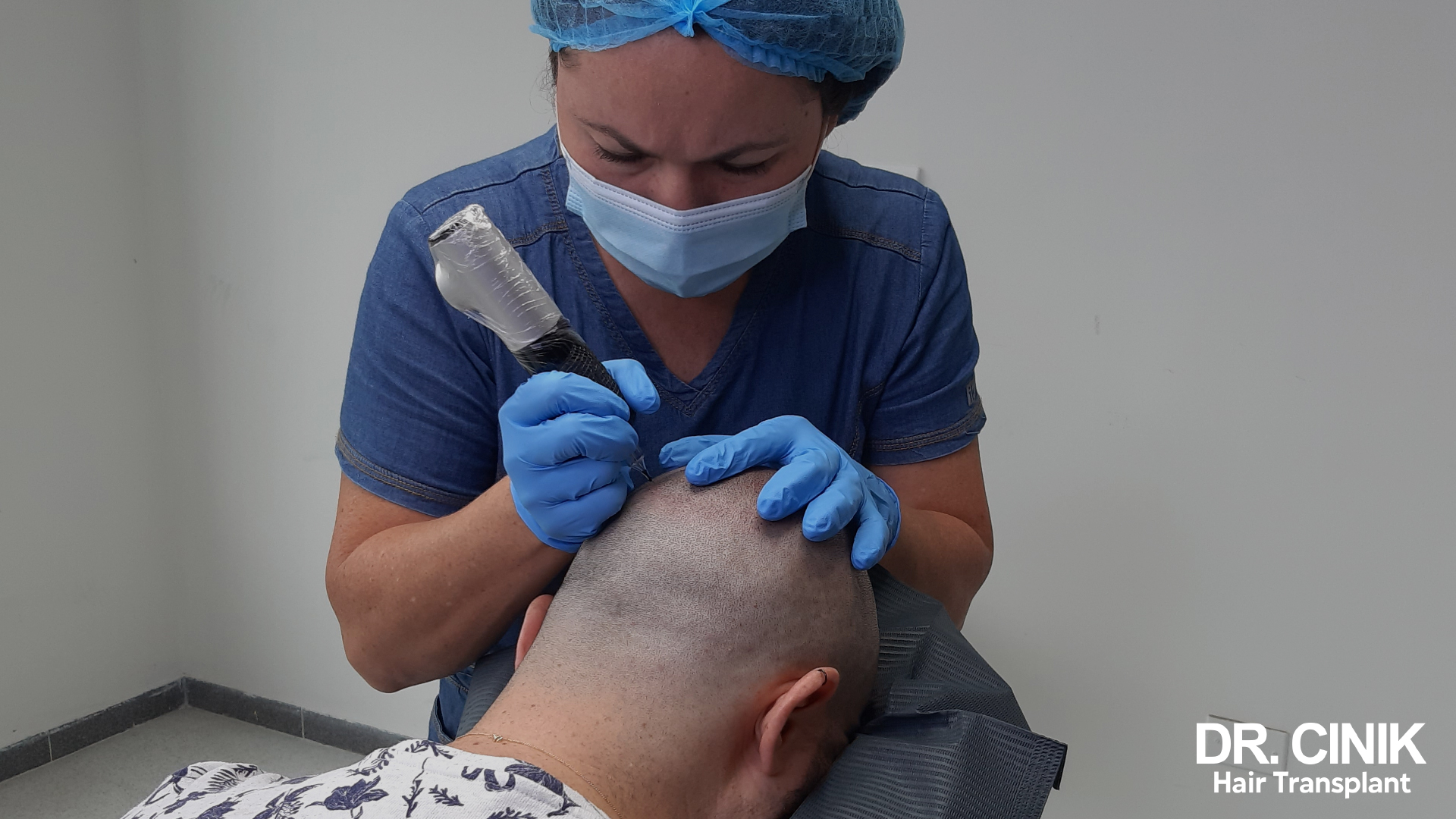Hair Transplant Solutions for Norwood 7 Baldness

Sommaire
When baldness reaches an advanced stage, such as Norwood 7 (almost complete baldness), options for hair transplantation become limited. At this level of baldness, the donor area may not have a sufficient quantity of follicles to allow adequate coverage of the recipient area. However, in some specific cases, a partial hair transplant may still be possible if the follicular density in the donor areas is sufficient. Alternative techniques, like micropigmentation, can also help partially camouflage advanced baldness.

Partial Hair Transplant for Norwood 7 Baldness
In the case of complete baldness corresponding to Norwood stage 7, the possibility of a partial hair transplant remains limited but can be considered in certain specific situations:
- Sufficient follicular density in usual donor areas: If the patient has a high enough follicular density in areas like the back of the skull, a partial transplant may be possible. The density must be adequate to allow the harvesting of a sufficient number of grafts without compromising the aesthetics of the donor area. On average, the permanent donor area contains approximately 10,000 to 15,000 follicular units. By following the 1:4 (25%) extraction rule, 2,500 to 3,500 follicular units can be obtained.

- Exploiting alternative donor areas: For patients with significant hair growth in non-traditional areas (such as the beard, chest, or pubic area), these areas can be used as alternative donor sources. However, careful evaluation of hair quality and compatibility is required. The beard can provide approximately 1,000 to 1,500 additional follicular units, while the number of follicular units that can be extracted from the body depends on the quality, thickness, and calibre of the hair.
A partial transplant is only possible in special cases after an in-depth examination of the patient’s situation. This assessment includes evaluating their general health, hair quality and texture, as well as their expectations and objectives.

In the case of a partial transplant at Norwood Stage 7, the goal will not be to cover the bald area completely but rather to make localised improvements, such as strengthening the frontal hairline or filling in specific areas.
Micropigmentation: An Interesting Alternative for Advanced Baldness
Scalp micropigmentation is a particularly interesting alternative for individuals with Norwood stage 7 baldness.
How Micropigmentation Works
Micropigmentation is a technique for mimicking the appearance of very short or shaved hair. It uses special pigments and reproduces the natural color and density of existing hair or simulates hair follicles on the balding scalp.

Effectiveness of Micropigmentation for Norwood 7 Baldness
Micropigmentation helps create an illusion of density, offering the appearance of a head with shaved hair or a very short cut. This option is ideal for those looking for a clean, defined style without the maintenance or constraints of traditional hair treatments.
One of the main advantages of micro pigmentation is its very natural-looking result. It also requires little maintenance, usually an annual touch-up to maintain its optimal appearance.
Combining Micropigmentation and Partial Hair Transplant
In certain cases, micropigmentation can be combined with a very localised partial hair transplant, particularly to reconstruct the frontal hairline or fill in specific areas. This combination optimises the effect of density and depth while preserving a natural appearance.
When considering solutions for advanced baldness, it is essential to consult with a qualified hair restoration specialist who can assess your individual case and recommend the most suitable approach based on your specific situation, goals, and expectations.
 en
en



